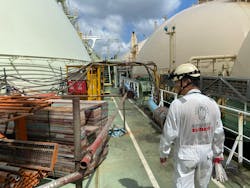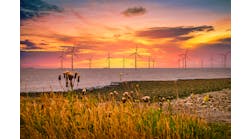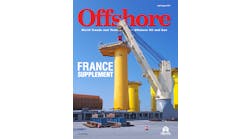Julien Boulland, Bureau Veritas
Conversion is offering a second life to gas carriers, but re-purposing these vessels as floating storage and regasification units (FSRUs) and floating storage units (FSUs) comes with technical and operational challenges for owners.
The liquefied natural gas (LNG) market is growing as more countries turn to gas to meet their rising energy needs. In parallel, there has been an increase in the number of gas carriers providing LNG transportation and distribution. In recent years, numerous laid-up ships have become available for varying reasons: they may be nearing the end of their design lives, or may be outside of modern specifications, phased out, or off-charter for the market. Owners are seeking to re-purpose their vessels and extend their lifecycle by converting them to FSRUs and FSUs as more countries see the capex and opex-reducing potential these units bring compared to onshore LNG terminals.
Furthermore, because they offer greater flexibility and are less infrastructure intensive, FSRUs can provide an intermediate solution (the time charter can be less than five years), during the length of time it takes to develop a permanent onshore solution. As the FSRU sector is still relatively new and developing, relationships between countries that require LNG and the FSRU providers can be complex. There are several key points that FSRU and FSU developers should consider to ensure their vessels are safe, fully compliant with environmental regulations, and appropriate for market demands.
Regulatory questions at both flag state and class levels are a major consideration for FSRU/FSU conversions. Depending on the intended modifications, project specifications and conversion work, different systems may be decommissioned, removed, modified, or added. Project developers must account for all statutory and classification concerns, including International Marine Organization regulations such as the International Convention for the Safety of Life at Sea (SOLAS), the International Convention for the Prevention of Pollution from Ships (MARPOL) and the IGC Code, which ensure that vessels comply with safety and environmental requirements. Coastal state and local port authorities may also need to be consulted, and their requirements taken into consideration.
Technical challenges abound. Gas carriers may need to undergo modifications to their power generation systems (e.g. boilers, generators), power distribution, propulsion, LNG cargo tanks, systems for cargo, cargo control, mooring, handling cranes and others. Owners looking to remove certain equipment must assess how this can be done safely, and under what conditions. From reviewing structural elements, to upgrading cargo containment systems, to adding new equipment, the list of technical challenges is considerable for conversion to FSRUs and FSUs.
Compliance with local environmental regulations also needs to be considered. In many cases, an FSRU or FSU will be in a stationary position close to shore and potentially near to other marine users such as fishing vessels. FSRUs use considerable amounts of seawater to heat up the LNG during regasification and the change in temperature of the discharged water is considerable. Therefore, it is essential that the vessel operators are fully aware of and compliant with local regulations on water emissions as well as others relating to environmental issues such as air quality and noise.
Another key question is how to keep a vessel on location for an extended period, potentially exceeding the typical five-year dry-docking regime. Project developers frequently seek a ‘no-dry dock’ approach, which has implications for conversion work on hull structure and equipment. Finally, there is the issue of cost, as owners seek to limit the price of on-site maintenance and minimize opex for their vessel’s extended lifecycle.
How classification societies can help
Classification societies can perform a range of analyses for gas carrier hull structures, cargo tanks, machinery, mooring systems, and more. Evaluation of hydrodynamics, design loads and scantling data, as well as structural assessments, offer owners a clear picture of their vessel’s condition, and allow classification societies to assist in developing a full inspection program. However, it is important that the product developer engages and involves a classification society at the earliest opportunity in a project, and that the relationship is maintained throughout the design and build process.
The classification society will be able to provide counsel and guidance from a regulatory perspective from the outset, to highlight potential challenges and how these may be overcome. By helping the product developer to avoid costly errors in regulation compliance and design early on, and by providing advice and expertise support along the way, the classification society can be seen as an enabler for the development of a safe, environmentally responsible, and cost-effective asset. •





